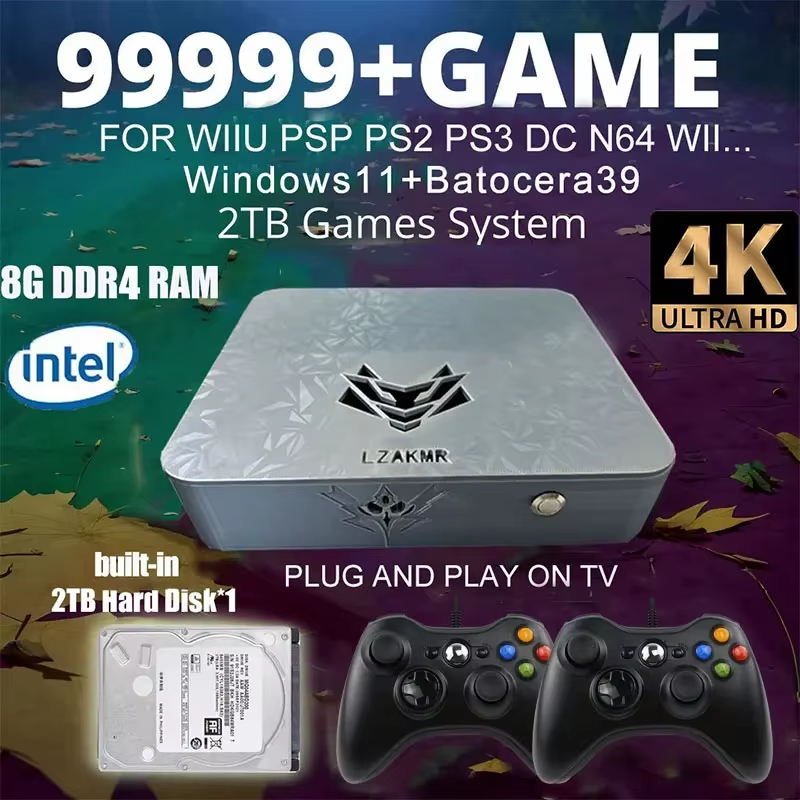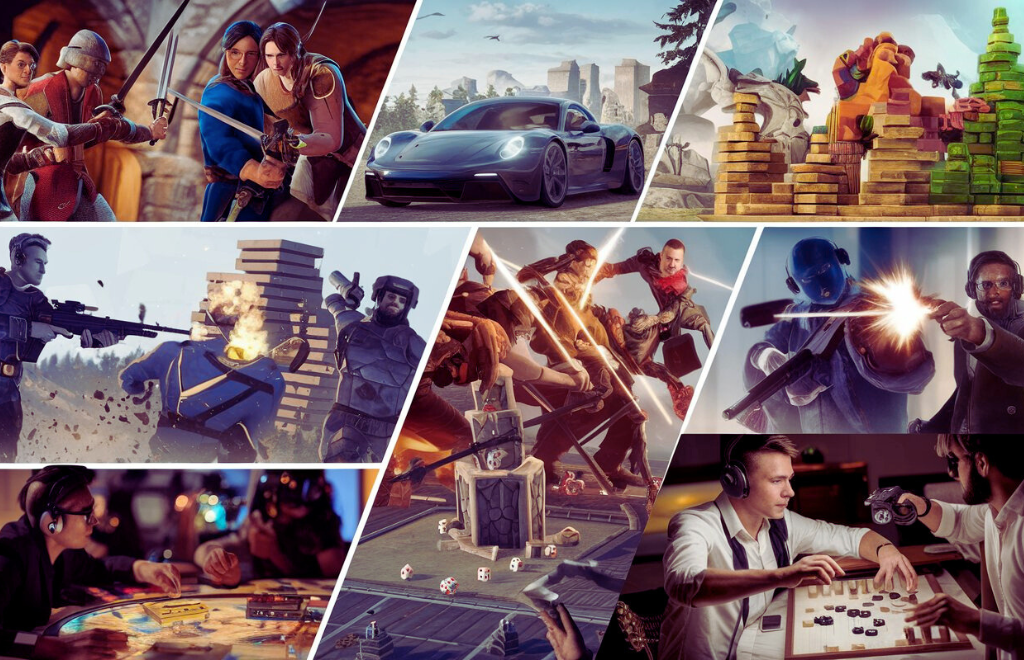In the ever-expanding digital universe, free online multiplayer games have carved out a massive space for themselves. They’ve transformed from simple pixelated adventures into complex virtual worlds where millions connect, compete, and collaborate daily. The landscape has shifted dramatically since the early days of dial-up connections and rudimentary graphics—today’s free-to-play ecosystem offers experiences that rival premium titles in both quality and engagement.
The appeal is undeniable. Who wouldn’t be drawn to high-quality entertainment that costs nothing to start? Yet beneath this simple premise lies a fascinating ecosystem of creative business models, passionate communities, and technological innovation that continues to reshape how we play and interact online.
The Evolution of Free-to-Play
Remember when “free games” meant basic flash titles or limited demos? Those days are long gone. The free-to-play revolution began as an experiment but quickly proved its worth, turning the traditional gaming business model on its head. Games like Fortnite, League of Legends, and Warzone didn’t just succeed despite being free—they thrived because of it.
The secret? Mass accessibility. By removing the initial price barrier, these games attracted enormous player bases. Some of the most successful titles boast tens of millions of active players—numbers that would be unthinkable with traditional payment models. This massive scale allows developers to profit through optional microtransactions, battle passes, and cosmetic items while keeping core gameplay entirely free.
But success breeds competition. Today’s free online multiplayer landscape is more crowded than ever, pushing developers to innovate constantly. This competitive pressure has resulted in higher quality games, more frequent updates, and better player experiences across the board.
Battle Royales: The Survival Genre That Changed Everything
Few gaming phenomena have had the impact of battle royales. The concept—drop in, loot up, and be the last player standing—has proven irresistibly addictive to millions of players worldwide.
Fortnite stands as perhaps the most culturally significant example. Epic Games’ colorful shooter transcended gaming to become a cultural touchstone, hosting virtual concerts, movie premieres, and even political discussions. Its building mechanics added a layer of strategy that set it apart from competitors, while its constant evolution kept players coming back for years.
Apex Legends took a different approach, focusing on hero-based gameplay and team dynamics. The fluid movement systems and distinct character abilities created a high skill ceiling that particularly appealed to competitive players. Meanwhile, Call of Duty: Warzone leveraged a familiar franchise to deliver a more accessible battle royale experience with tight gunplay and streamlined mechanics.
What makes these games so compelling isn’t just their gameplay—it’s their constant evolution. Map changes, new weapons, seasonal events, and fresh mechanics ensure the experience never grows stale. The best battle royales aren’t just games; they’re living platforms that change and grow alongside their communities.
MOBAs: Strategic Depth That Rewards Dedication

Ultimate Gaming Experience AK2 N100 70000+Game
Price Now : 157.42 USD

Multiplayer Online Battle Arenas (MOBAs) represent perhaps the highest skill ceiling in competitive gaming. These team-based strategy games combine elements of real-time strategy with character progression, creating deeply tactical experiences that players can spend years mastering.
League of Legends remains the titan of the genre, with over 150 million monthly players worldwide. Its 5v5 format on a three-lane map has become the template for countless competitors, while its professional scene draws viewership numbers that rival traditional sports.
Dota 2 offers a more complex alternative, with mechanics that can take hundreds of hours to fully grasp. Its annual tournament, The International, consistently breaks esports prize pool records, with recent editions offering over $40 million in prizes.
SMITE found success by changing perspective, moving from the traditional top-down view to a third-person camera that made the genre more accessible to console players and those familiar with action games.
What makes MOBAs particularly fascinating is their depth. Even after thousands of matches, players continue discovering new strategies, interactions, and techniques. This endless learning curve keeps dedicated players engaged year after year—a remarkable achievement in an industry where many games are forgotten within months.
MMORPGs: Vast Worlds to Explore Together
Massively Multiplayer Online Role-Playing Games offer something unique: persistent worlds where thousands of players can interact simultaneously. These virtual societies become second homes to many players, complete with economies, social structures, and histories that evolve over years.
Guild Wars 2 revolutionized the genre by eliminating subscription fees without sacrificing quality. Its dynamic event system created a more organic world where players naturally cooperate rather than compete for resources. The base game remains free, with expansions and cosmetics providing revenue.
Star Wars: The Old Republic combines BioWare’s storytelling prowess with the beloved Star Wars universe. While initially subscription-based, it transitioned to a free model that gives access to the complete original story—hundreds of hours of fully-voiced content set in a galaxy far, far away.
Lost Ark entered the Western market with a splash, combining isometric action RPG combat with MMO progression and social systems. Its free model gives access to all content, with convenience items and cosmetics available for purchase.
The social aspect of MMORPGs cannot be overstated. Many players form friendships that transcend the game, with guild mates becoming real-life friends. These games aren’t just entertainment—they’re communities that provide belonging and connection in an increasingly isolated world.
FPS Games: Reflexes and Strategy in Perfect Balance
First-person shooters remain gaming’s most recognizable genre, and free-to-play has opened these experiences to wider audiences than ever before.
Valorant combined precise Counter-Strike-style shooting with hero abilities borrowed from MOBAs. This hybrid approach created something fresh that appealed to both tactical shooter veterans and newcomers. Its emphasis on communication and strategy means even players with slower reflexes can contribute meaningfully to their team.
Counter-Strike 2 continued the legacy of the world’s most influential tactical shooter. When Valve made it free-to-play, it opened the gates to millions of new players while maintaining the core experience that made it an esports staple for over two decades.
Team Fortress 2 may be showing its age, but its charming art style and perfectly balanced class system keep players coming back. As one of the pioneers of the free-to-play model among major titles, its influence on the industry cannot be overstated.
What makes these shooters special is their depth beneath the surface. While they may seem simple—point and click at enemies—mastering maps, understanding economies, perfecting utility usage, and developing team strategies creates a learning curve that keeps players engaged for years.
The Social Element: More Than Just Games
The most successful free online multiplayer games understand a fundamental truth: players might come for the gameplay, but they stay for the social connections. These games aren’t just entertainment—they’re social platforms where friendships form and communities thrive.
Discord servers, subreddits, and other community spaces extend the experience beyond the game itself. Players discuss strategies, share creations, organize events, and form bonds that can last years. For many, these games provide meaningful social interaction in a world where traditional community spaces are increasingly rare.
Game developers increasingly design with this social element in mind. Features like guilds, clubs, and in-game events encourage player interaction and community-building. The most successful titles become digital “third places”—neutral grounds where people gather simply to enjoy each other’s company, with the game as a shared activity rather than the sole focus.
The Future of Free Online Multiplayer
As technology advances, the line between free and premium experiences continues to blur. Cross-platform play is becoming standard, allowing friends to connect regardless of their chosen device. Cloud gaming services promise to eliminate hardware barriers entirely, potentially allowing complex games to run on even basic devices.
Artificial intelligence may soon revolutionize how NPCs behave, creating more dynamic worlds that react intelligently to player actions. Virtual reality and augmented reality technologies promise to make digital worlds more immersive than ever before, though accessibility remains a challenge.
Web3 technologies, despite controversy, continue exploring new ownership models that could fundamentally change how in-game items function. Whether these experiments will find mainstream success remains unclear, but the exploration itself drives innovation.
One certainty is that free online multiplayer games will continue evolving. The basic human desires they fulfill—competition, cooperation, creation, and connection—remain constant, but the forms they take will change with technology and cultural shifts.
Conclusion
Free online multiplayer games have transformed from a niche curiosity into one of entertainment’s most vibrant sectors. They’ve democratized gaming, created new business models, and connected millions of people across geographical and social barriers.
The best of these games don’t just entertain—they create spaces where skills are developed, friendships are forged, and memories are made. They evolve alongside their communities, becoming platforms rather than static products.
As technology advances and more people seek meaningful connection in digital spaces, these games will only grow in cultural significance. Whether you’re looking for intense competition, creative collaboration, or simply a place to hang out with friends, there’s never been a better time to dive into the world of free online multiplayer games.
FAQ
Are free-to-play games really completely free?
The core gameplay of most free-to-play games is genuinely free, but they typically offer optional purchases. These range from cosmetic items that don’t affect gameplay to convenience features that save time. The best free games maintain a fair balance where paying players don’t gain significant competitive advantages.
What equipment do I need to play these games?
Requirements vary widely. Many popular free games like League of Legends or Valorant are designed to run on modest PC hardware. Mobile free-to-play games often work on smartphones that are several years old. That said, battle royales and newer MMORPGs might require more powerful hardware for optimal performance.
Is it possible to be competitive without spending money?
Absolutely! Most successful free-to-play games have strict policies against “pay-to-win” mechanics. Many professional esports players began on free accounts, and numerous games (particularly competitive ones) limit purchases to cosmetic items only.
How do I find people to play with?
Most popular games have dedicated Discord servers, subreddits, and official forums where players can connect. Many also feature in-game systems for finding teammates. Don’t be afraid to use these resources—playing with others not only enhances the experience but often accelerates learning as well.
Are free online games safe for children?
This depends entirely on the specific game. Many free games have chat features and interactions with strangers, which requires proper supervision. Look for games with robust parental controls, mute options, and reporting systems. Always research a game’s community reputation before allowing younger players to participate.
How much data do these games use if I have limited internet?
Most modern multiplayer games are surprisingly efficient with data. Games like MOBAs and team shooters typically use between 50-100MB per hour, though initial downloads can be substantial. MMORPGs might use more due to their larger worlds. If data is limited, look for games that allow you to download major updates during off-peak hours.






